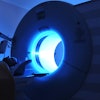An automated lung nodule matching program for CT studies can significantly improve diagnostic efficiency for radiologists, according to a study published in the July issue of the American Journal of Roentgenology.
In a retrospective study involving four thoracic radiologists who reviewed two serial chest CT examinations from each of 57 patients, a research team led by Dr. Chi Wan Koo of the Mayo Clinic in Rochester, MN, found that the automated program yielded significant time savings over manual lung nodule matching methods.
"The time saved is proportionate to the number of nodules identified and is not hindered by nodule size, interval growth, or location," the authors wrote. "Integration of such a program into the PACS, where it may be used routinely, would expedite CT examination interpretation and improve workflow."
Traditionally, radiologists visually localize and compare nodules on serial CT exams to determine interval changes. To determine if a software program that performs automated nodule matching could improve this time-consuming process, the study team enlisted four thoracic radiologists to independently review two serial chest CT examinations from each of 57 patients and perform timed manual lung nodule matching (AJR, July 2012, Vol. 199:1, pp. 91-95).
After a gap of six weeks, the radiologists repeated the timed matching portion of the review using an automated nodule matching program. The researchers compared the times for manual and automated matching and determined the impact of nodule size and number on matching efficiency.
An average of 325 noncalcified solid pulmonary nodules was identified by the radiologists during their review. For all readers, nodule matching was significantly faster (p < 0.0001) with the automated program than with manual matching.
Mean time savings was 2.3 ± 2.0 minutes, with a maximum time saved of 11.4 minutes. For three readers, automated matching was faster in 56 (98.2%) of 57 cases; it was faster in 46 (80.7%) of 67 cases for one reader.
In other findings, the researchers detected no differences (p > 0.05) among readers for mean time saved per matched nodule. For the four readers, the automated program had an accuracy of 90%, 90%, 79%, and 92%, respectively.
Improvements in efficiency for a given patient using the automated technique was proportional to the number of matched nodules (p < 0.0001) and inversely proportional to nodule size (p < 0.05), according to the researchers.




















